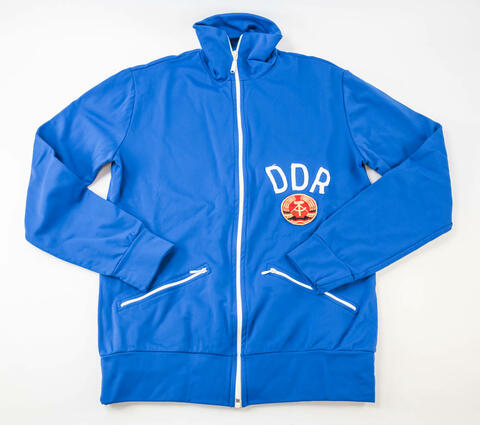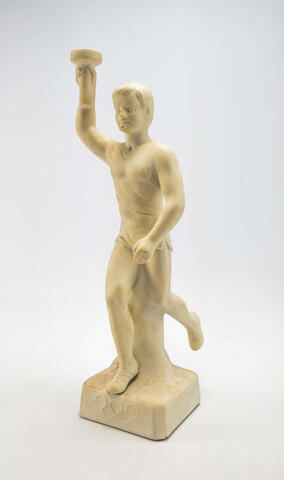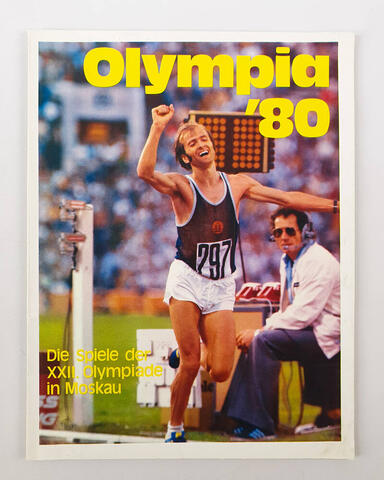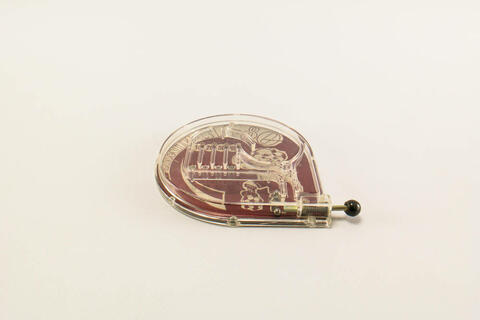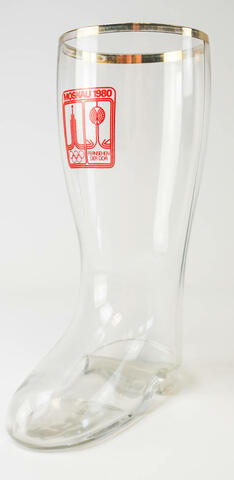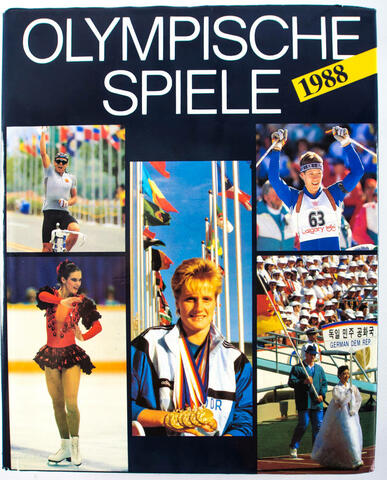GDR History
The Summer Olympics and the GDR
Following the end of the Second World War, the Olympic movement began in the respective occupation zones with the founding of a provisional Olympic Committee. However, as this was not recognised by the International Olympic Committee (IOC), German athletes could not take part in the first Olympic Games after the Second World War. Subsequently, National Olympic Committees were founded in each of the two German states. As only the West German committee was recognised, only West German athletes were allowed to take part in the 1952 Summer Games in Helsinki.
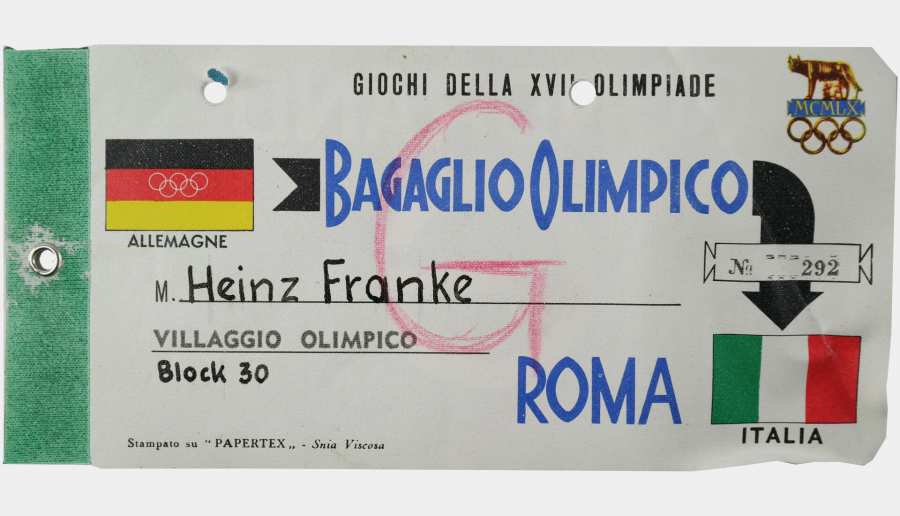
Fig.: Access card for the 1960 Olympic Village in Rome with flag of the all-German Olympic team
An all-German Olympic team 1956-1968
The IOC then urged the two German states to form a joint solution for the following Olympic tournaments, resulting in an all-German team taking part in the Games between 1956 and 1968. Since it was not possible to agree on a uniform national anthem, an excerpt from Beethoven's »Ode to Joy« was played when necessary. Similar difficulties were encountered with regard to the national flag. Since none of the German states accepted the flag of the other, a flag in the German national colours with a central image of the five Olympic rings was created for the years of all-German participation.
The GDR in the 1972 Munich Olympics
For the 1972 Olympics in Munich, two German teams competed independently for the first time. German-German competition for the prestigious medal places was thus opened. At the end of the Olympic tournament, the GDR was in third place in the medal table behind the Soviet Union and the USA, followed by its great rival from the Federal Republic. Four years later, in Montreal, Canada, the GDR even made it to second place in the overall standings, pushing the USA into third place. The West German team came fourth, just like at the tournament in their own country.
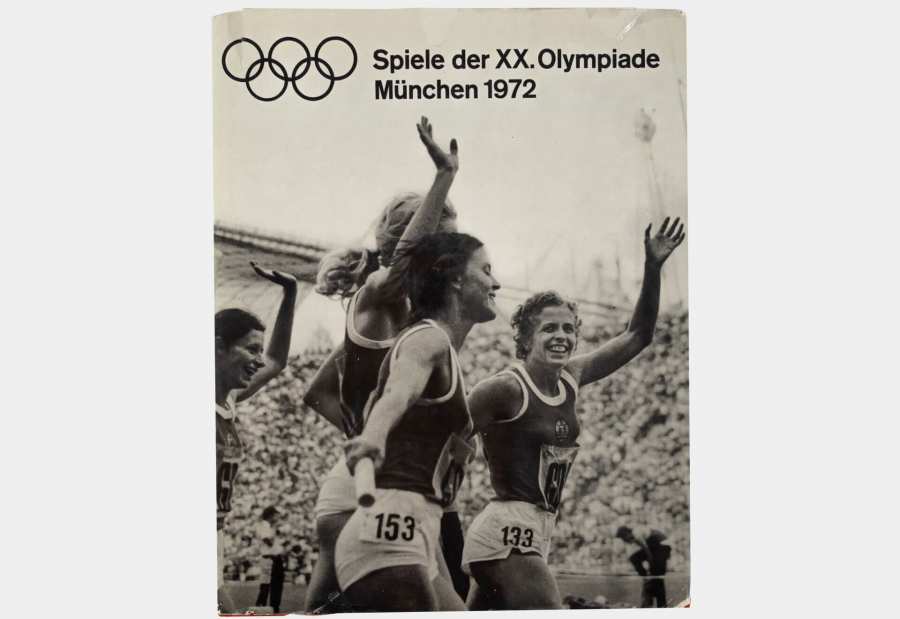
Fig.: Complete edition on the XX. Olympiad 1972, published by Sportverlag Berlin, 2nd edition, 1974
The GDR in the 1980 Olympic Games in Moscow
The 1980 Olympic Games were supposed to be a highlight of the East German Olympic movement. However, the games in Moscow were boycotted by 42 western countries. Since the team from West Germany did not compete, the Soviet and East German athletes dominated almost every sport. Together they won more than half of all medals. In the final standings, the GDR was in second place behind the »big brother« Soviet Union, as it had been four years earlier.
Counter-boycott of the GDR at the L.A. Olympic Games
After the boycott in Moscow, the socialist camp counter-boycotted the Olympic Games in Los Angeles four years later. The third boycott in a row forced the IOC to rethink. This and the easing conflict between the superpowers subsequently led to more tolerance and an opening-up of relations.
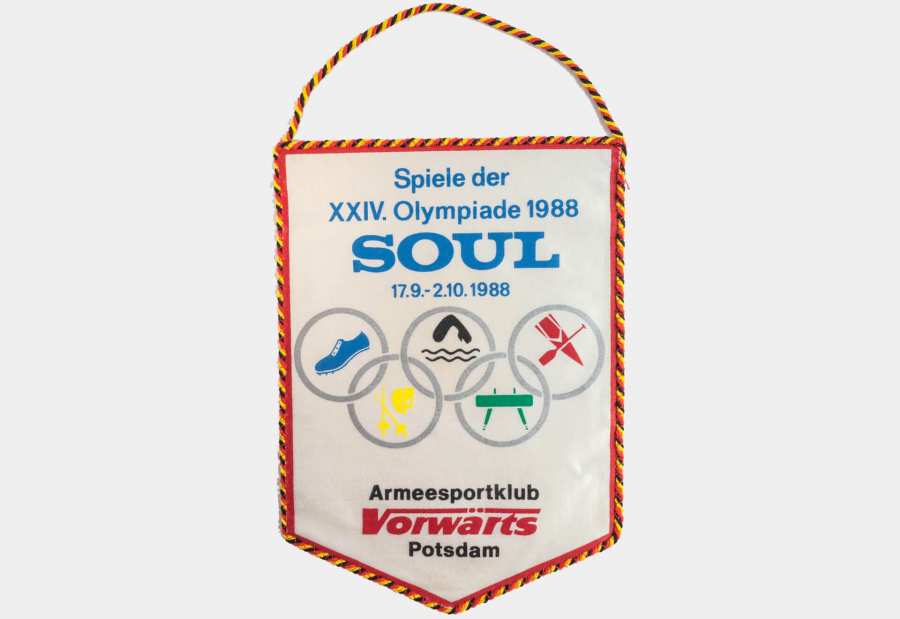
Fig.: Triangular pennant made of fabric with cord in the national colours of the GDR, Armeesportklub Vorwärts Potsdam.
The GDR's last Olympic Games in Seoul
At the Summer Games in Seoul, South Korea, in 1988, (almost) all nations were represented again after more than a decade. The athletes from the GDR once again took second place in the overall standings at the final Games before German reunification. The West German athletes were beaten in the overall standings by the hosts from South Korea and came fifth. At the following Games in Barcelona in 1992, an all-German team competed again and achieved a fair third place. The disputes over the flag and the national anthem, like the division of Germany, were a thing of the past.
Editor's note: This blog post first appeared on 11 August 2016.
